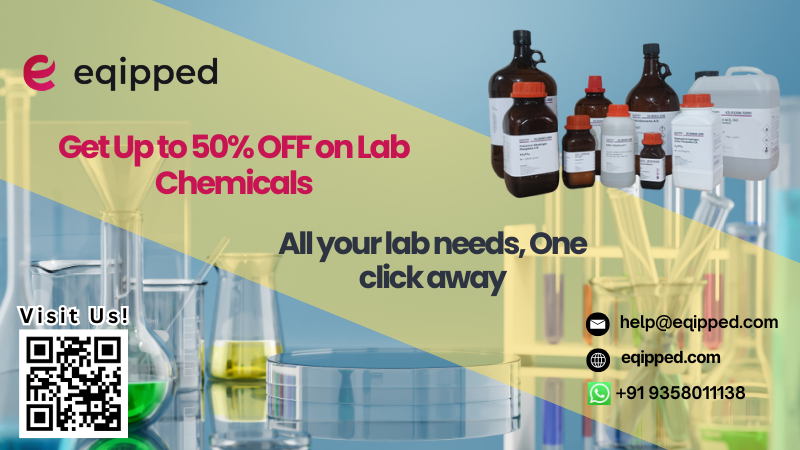The Role of Laboratory Chemical in Modern Education

In the modern era of science education, practical learning has become just as important as theoretical study. While books and lectures provide the foundation of knowledge, it is inside the laboratory where curiosity turns into discovery. A key element of this transformation is the use of the laboratory chemical, which serves as the building block of countless experiments. From the simplest reactions in school science labs to advanced projects in universities, chemicals provide students with hands-on exposure that develops critical thinking, problem-solving abilities, and a deeper appreciation of science.
Why Laboratory Chemicals Are Important in Schools
The importance of laboratory chemical use in schools cannot be overstated. At the high school level, students are introduced to the basics of chemistry through experiments that use common chemicals such as hydrochloric acid, sodium hydroxide, copper sulfate, and ethanol. These experiments bring abstract textbook concepts like neutralization, precipitation, and oxidation-reduction to life. Handling chemicals allows learners to connect theory with practice, making subjects like chemistry and biology more engaging and memorable.
Laboratory Chemical Use in Colleges and Universities
At the college and university level, the role of laboratory chemicals becomes even more significant. Students are no longer just repeating simple experiments but are challenged to explore advanced scientific principles. In organic chemistry labs, chemicals are used to synthesize new compounds, helping students understand the structure and reactivity of molecules. In biology and biotechnology courses, reagents such as staining dyes, enzymes, and buffers play a central role in studying DNA, proteins, and cells. Even in physics and environmental sciences, laboratory chemical applications are vital, whether in analyzing water samples for pollutants or preparing solutions to demonstrate physical phenomena.
Green Chemistry: A Trending Approach in Education
One of the trending topics in education today is the integration of sustainable practices in science laboratories. With growing awareness of environmental responsibility, schools and colleges are seeking eco-friendly alternatives when it comes to laboratory chemical use. Many institutions are substituting traditional solvents with water-based or biodegradable options. Green chemistry experiments, designed specifically for classrooms, are gaining popularity because they reduce exposure to toxic substances while still delivering effective learning outcomes.
Virtual Labs and Blended Learning
Another key trend is the increasing use of digital tools alongside laboratory chemicals to create a blended learning experience. Virtual labs are becoming popular in schools and colleges, where students can simulate chemical reactions safely on a computer before performing them in real life. This approach helps minimize waste of chemicals, reduces costs, and ensures safety. When students eventually conduct experiments with actual laboratory chemicals, they are better prepared and more confident.
STEM Education and Hands-On Chemistry
The global STEM education movement has also highlighted the value of hands-on experiments with laboratory chemicals. Governments and educational organizations are promoting science fairs, workshops, and innovation challenges where students use chemicals to design projects, solve real-world problems, and showcase creativity. From testing water quality in local communities to developing simple prototypes for renewable energy, the use of laboratory chemicals in student projects demonstrates how science education can directly connect with society.
Challenges in Using Laboratory Chemicals in Education
Despite their importance, the increased use of laboratory chemicals in schools and colleges also comes with challenges. Safety remains the foremost concern. Proper storage, handling, and disposal of chemicals are essential to prevent accidents. Teachers and laboratory assistants need to ensure that students are trained in safety protocols such as wearing protective gear, understanding chemical labels, and following correct disposal methods. Another challenge is cost, as certain laboratory chemicals can be expensive for schools with limited budgets.
The Future of Laboratory Chemicals in Education
Looking into the future, the role of the laboratory chemical in education is set to expand further. Advancements in biotechnology, nanotechnology, and materials science are creating new opportunities for classroom learning. Safe, student-friendly chemical kits are now available that allow experiments like DNA extraction to be carried out even in high schools. At the university level, integration with advanced instruments such as spectroscopy and chromatography makes lab work more industry-relevant. We are also seeing the development of biodegradable and recyclable laboratory chemicals designed specifically for education, ensuring that sustainability goes hand in hand with learning.
Why This Topic Has Viral Potential
The viral potential of this topic lies in its universal relevance. Parents, students, and educators alike understand the importance of hands-on science learning. Social media platforms are filled with engaging videos of classroom experiments using simple chemicals, from the classic “volcano eruption” with baking soda and vinegar to advanced titrations in college labs. Eco-conscious discussions about safer alternatives to harmful chemicals also resonate strongly with today’s audiences, bridging the gap between education, science, and sustainability.
Conclusion
In conclusion, the laboratory chemical remains at the core of science education, from schools introducing children to basic reactions to universities preparing the next generation of researchers. It empowers students to move beyond theory, engage with science in a practical way, and develop critical skills for the future. As trends like green chemistry, digital learning, and STEM outreach continue to grow, laboratory chemicals will not only maintain their place in education but will also evolve to meet the demands of sustainability and innovation. Whether in classrooms, colleges, or global science initiatives, the laboratory chemical is more than a substance—it is a tool of inspiration, exploration, and progress for the scientists of tomorrow.








